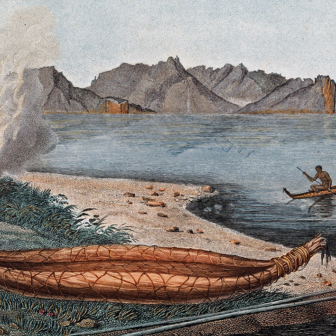Jess Hill’s See What You Made Me Do was an arresting account of women’s and children’s experiences of abuse, the systems that support their perpetrators, and strategies that seemed to be working to tackle the problem in communities outside Australia. In the words of her publishers, the book showed that “we can drastically reduce the violence — not in generations to come, but today.” Six years on, after an SBS documentary series, a podcast and thousands more published words on the topic, Hill assesses progress in a new Quarterly Essay, Losing It: Can We Stop Violence Against Women and Children?
Hill began work on this form of violence in 2015. As a journalist she took a deep dive into women’s and children’s stories and how our politicians, courts and policy makers respond to them. She was determined to change how she and her colleagues reported on domestic abuse.
Nine months into the first year she told Guardian readers that she had started out thinking domestic violence was an extension of the worst behaviour any of us might show when we take out our distress on those who are closest to us. This notion was demolished within weeks of asking questions of victim-survivors and sector workers and listening carefully to the answers. At the heart of domestic violence, she learnt, is power and control. Those driven by this need, and by a sense of entitlement to power and control, frequently hide it from everyone but their victims.
The idea that the good bloke you work with might be going home and abusing those closest to him seemed counter-intuitive. “Domestic violence doesn’t make sense,” she wrote, but “for the thousands suffering in silence at this very moment — we need to make sense of it.”
In the intervening decade Hill has done much to illuminate the dynamics between perpetrators, victim-survivors and the systems that hold and reject them. During a time when the issue has become highly politicised, her accounts of domestic and family violence have reached a wider audience than most researchers, policy-makers or service providers ever reach. Her work has been both lauded and sharply criticised, but she remains fearless, determined and committed.
Watching policy shifts and frustrating continuities over those years has inevitably changed Hill’s views. Losing It is evidence of a broadening of perspective and a willingness, for the sake of getting it right, to challenge some of the people most deeply involved in efforts to prevent domestic and family violence — those whose work has been crucial in earlier stages of her passage towards the positions she outlines in this essay.
For those of us who might have hoped that the increasing visibility of domestic, family and sexual violence was primarily an effect of higher rates of awareness and reporting, the most alarming message of Losing it is that numbers are climbing. The “one a week” statistic that shocked the nation in 2015 no longer captures the extent of the violence.
Hill was writing in November 2024, when Donald Trump, a known sex offender, had just been elected president for the second time. Despite record levels of public funding and awareness, sixty-nine Australian women had already been killed during the calendar year by their current or former intimate partners. Those working in the sector were feeling “bone-tired,” Hill writes, in the face of this increase in violence. She pays homage to the thousands who are working to end gendered violence and positions herself as an “insider–outsider” of their communities.
Hill writes with a sense of urgency. While gendered violence is a problem that is often described as intractable, she reports on a fast-changing cultural and political landscape that, she argues, policy-makers have failed to keep up with. Hill zeros in on the nation’s primary prevention strategy Change the Story: A Shared Framework for the Primary Prevention of Violence Against Women and Their Children in Australia, a suite of educational resources for schools, workplaces and elsewhere launched in 2015 with great optimism and fanfare to tackle the drivers of gendered violence. For Hill, the government overinvested funding and faith in this intensely resourced project, which was the centrepiece of the federal response. Despite unchanged attitudes and increased violence, Change the Story remains at the centre of national violence-prevention policy.
Part of the problem is what Hill calls The Backlash Factory. At the top of this system are governments run by figures like Donald Trump and Vladimir Putin that have pushed back against international rights and recognition for marginalised people. The next level down are the wealthy right-wing Christian organisations, Russian oligarchs and think tanks fuelling disinformation and targeting LGBTQI and reproductive rights, anti-racism advocates and those working for other progressive movements. The Andrew Tates of the world — who are “really just the guys on the factory floor” — occupy the third level down, facilitating tech-based violence and seeking to render the public sphere uninhabitable for women, girls and LGBTQI folks and their advocates. “Broadcasting prevention messages into this febrile and dangerous atmosphere is not just difficult,” Hill writes, “but fraught with risk.”
This is all context for considering the results of Australia’s Gender Compass survey, carried out by Plan International, which leave a confusing picture of understandings and attitudes to gender inequality among men and women across a range of age groups. What the survey results don’t reveal is any attitudinal transformation as a result of Change the Story.
Probing further, Hill investigates political divisions in Canberra over the theory of change that underlies the prevention strategy. Here she explains the “Nordic Paradox”: the Nordic countries’ above-average rates of both gender equality and gendered violence. That anomaly has been a cause for pause among some within the federal Department of Social Services, who argue that focusing on gender equality and changed gender norms draws attention and material resources away from other key causes of violence, namely alcohol, gambling and childhood trauma.
Those factors are the elephants in the room that some claim have been buried in government responses — despite the overwhelming evidence of their significance gathered by royal commissions and in academic research. Much of the rest of Losing It is devoted to these issues.
As usual, Hill’s account features many compelling case studies. One family introduced early and revisited throughout is Theresa and her three children. When they eventually escaped an abuser who had subjected them to physical, sexual and psychological violence, Theresa tried to find help for her children. There was nothing; their case was considered too complex. Theresa’s two sons and daughter soon began exhibiting their own range of challenging and violent behaviours. “She had become their full-time caseworker,” writes Hill, “even as she was forced to spend hundreds of thousands of dollars fighting for the right to be their full-time parent.”
Mothers like Theresa, says Hill, “are Australia’s unofficial reserve army of prevention agents.” The point resonates: just last week I attended the South Australian premier of Unanswered Calls, a documentary produced by Safe Steps, a provider of immediate crisis support for people experiencing domestic and family violence in Victoria. Building on research into systems outside of Australia by Churchill fellow Chelsea Tobin, the film reflects on how that state’s post–royal commission systems respond to the needs of children and young people. A number of young people tell their story of feeling invisible in the system, not knowing how to seek help, and trying and failing to take care of their own wounds without becoming a further burden on their mothers.
Hill describes trajectories like these as the two stages of violence that young people face: the violence caused by the perpetrator and that caused by the failure of the system to make a receptive space for their needs. Seeing Unanswered Calls and reading Losing It gave me a sense that there is a groundswell of commitment to tackling this crucial part of the domestic and family violence picture. Hill argues that adequate specialist services for children whose mothers are victims, who have been directly targeted themselves, or who are victims by dint of their proximity to violence would create a future strikingly different from the present.
Without help, young people are at risk of being re-victimised or becoming perpetrators in their intimate relationships. Hill discusses a rare study of young people’s experiences of intimate partner violence undertaken by Anglicare in Tasmania that interviewed youth workers and their clients. It found that the rate of gendered violence for teenagers was high and featured high rates of serious assault. “Just anecdotally,” one youth worker said, “young women are in more physically violent relationships than older women.”
This chimes with a statistic cited by Hill earlier in the essay. While the sexual abuse of young people by adults has declined, the sexual abuse of young people by their peers is on the rise. The worst parts of the online world, inhabited by young men especially, can’t be ignored in this picture. But neither can the histories of abuse that are carried by young victims. Losing It argues that attending to their inner worlds as close to the point of victimisation as possible, and regulating alcohol consumption and gambling, are the best chances we have at preventing intergenerational cycles of violence.
In other words, Change the Story can’t do the prevention work alone. Its effects, arguably nebulous, are too far removed from the acute settings that are shaping young victim-survivors’ lives. This is Hill’s pivotal message. After establishing the centrality of power and control in See What You Made Me Do, she has followed her own advice to remain curious, and in Losing It she attempts to answer the question “where does this need for power and control come from?”
“We’ve long agreed on a narrative about abusive men: that they do it for power and control…,” she writes. “But a two-dimensional framing of abusive men as powerful and privileged fails to recognise that they too have a complex inner world.” Hill argues persuasively that no matter how unappetising it may seem to explore the vulnerabilities of those inflicting abuses on women and children, understanding perpetrator pathways is crucial if we want to have a chance at stopping the violence at the start.
For those of us immersed in analysing the vagaries of hegemonic masculinity and its dividends for men, past and present, this is the element in prevention that feels like more emotional labour that will fall disproportionately to women who are already doing the heavy lifting. But Hill makes a compelling case that preventing violence involves not just transforming the big picture but training our lens on the source. •
Losing It: Can We Stop Violence Against Women And Children?
By Jess Hill | Quarterly Essay/Black Inc. | $29.99 | 128 pages




